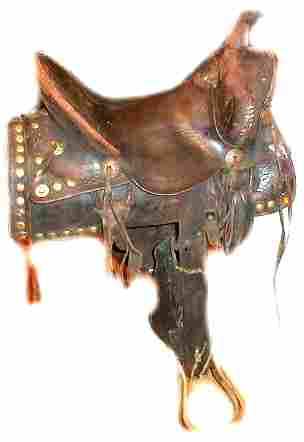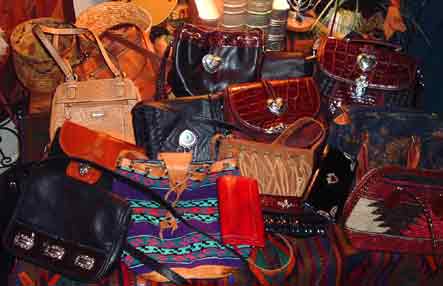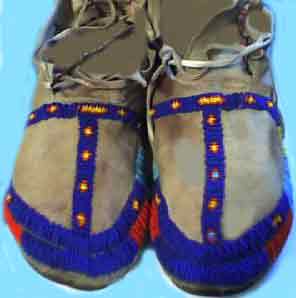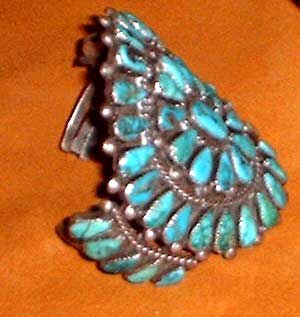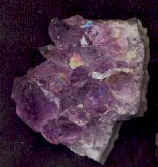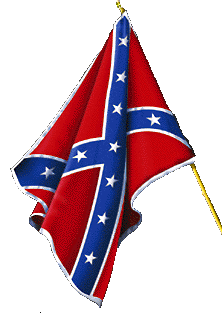|
Biography of General George A. Custer
*******CONTACT INFORMATION*******
MAILING ADDRESS: FORT TUMBLEWEED, P.O. BOX 1479, CEDAR PARK, TEXAS 78630
EMAIL ADDRESS: lenkubiak.geo@yahoo.com
PHONE: 512 630 4619





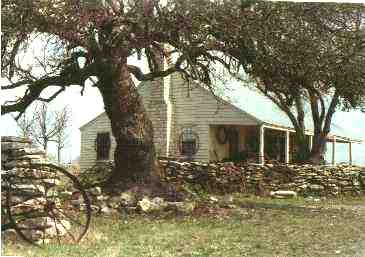


Biography of Gen. George Custer
General George Custer was born on December 5, 1839, in New Rumley, Ohio.
George Custer entered the Military Academy graduating on June 24, 1861 at the
foot of his class called "The Immortals",and went on to become the youngest
Major General in the history of the United States Military (age 25).

General George A. Custer, Graduate of West Point, Distinguished Civil War Office, and Famous Indian Fighter.
Custer's Service in the Civil War
In 1861, Custer graduated from West Point and almost immediately entered the Civil War serving at the First Battle of Manassas as a Yankee soldier. After serving on the staffs of Generals McClellan and Pleasanton, Custer was appointed the "Brevet" rank of Brigadier General of Volunteers and placed in command of the 2nd Brigade, 3rd Cavalry Division at Gettysburg and Yellow Tavern (1963). Custer commanded the 3rd Cavalry Division in the Shenandoah Valley campaign, Fisher's Hill and Five Forks and eventually achieved the rank of Major General of Volunteers by war's end.
Custer Assigned to Texas
After the Civil War was over, Custer was sent to Texas
to command the cavalry of the Department of Texas and assist with the transition of
the Texas government from Texans to carpetbaggers.
It was during this period of time that Custer and his troops were guests at the
Bryson stagecoach stop in Liberty Hill.
Custer Enters the Indian Wars with the 7th Cavalry
In March of 1867, with Indian attacks became more and more violent in the high plains of western Kansas and eastern Colorado, the 7th Cavalry was assigned to the conflict. Under the command of General Hancock, they marched from Fort Riley to Fort Larned where they were joined by 6 infantry companies and a battery of artillery, creating a task force consisting of over 1,400 men.
In April 1867, a meeting was held between the Army and a few chiefs of the Plains Indians. Due to a misunderstanding, when the Army moved their troops closer to the Indian encampment, the Indians feared an attack and they fled under the cover of night. Custer and the 7th Cavalry, given the task of tracking the Indians down, spent the entire summer in the attempt to find them. The only contact they made with the Indians were with small war parties which constantly harassed the troops.
Custer Cort Martialed and Found Guilty in 1867
During this campaign, Custer later left his command in the field and traveled back to Fort Riley to visit his wife. Upon arrival there, Custer was placed under arrest for being Absent With Out Leave. On 15 September 1867, Custer was court-martialed and found guilty. He was sentenced to one year suspension from rank and pay. He went home to Monroe, Michigan where he waited out his suspension.
On 24 September 1868, Custer's court martial was remitted and he rerejoined his troops on Bluff Creek (near present day Ashland, Kansas.). Almost immediately upon his arrival, the Indians attacked the camp. Custer and his troopers gave chase and followed the Indians' trail back to Medicine Lodge Creek, but found no Indians. Custer returned to his camp on Bluff Creek where, he and General Sheridan planned a Winter Campaign. Then heavy snows of winter would slow down the warriors, and their ponies would be weak and could not travel far. If the Indian villages were hard hit and their supplies destroyed, the Indians would have to return to the reservation or starve. They knew that during the winter months, the Indians would stay at one location which had good water and a source of firewood for heat; all they had to do was - to find it!
Sheridan's plan involved three columns: Colonel Andrew W. Evans with six troops of the 3rd Cavalry and two companies of the 37th Infantry were to travel down the South Canadian River. The second column consisted of seven troops of the 5th Cavalry under the command of Major Eugene A. Carr. They marched southeast from Fort Lyon, Colorado, and connected with Captain William H. Penrose and his column of five troops of cavalry. Then they scouted at Antelope Hills, along the North Fork of the Canadian River. The third column was to march from Fort Dodge under the command of General Sully and George A. Custer.
General Sheridan selected the 7th Cavalry, commanded by George Armstrong Custer, to take the lead. They were to move southward, and engage the Indians. This column was made up of eleven troops of the 7th Cavalry and five companies of the 3rd Infantry. Setting out in a snowstorm, Custer followed the tracks of a small Indian raiding party to a Cheyenne village on the Washita River. At dawn he ordered an attack. It was Chief Black Kettle's village, well within the boundaries of the Cheyenne reservation. Nevertheless, on 27 November 1868, nearly four years after the battle of Sand Creek, Custer's troops charged, and this time Black Kettle could not escape. In a subsequent battle of the Winter Campaign, the 3rd Cavalry under the command of Colonel Andrew W. Evans, struck another Comanche village at Soldiers Spring on Christmas Day. The Winter Campaign had been waged successfully against the Cheyenne in the Oklahoma Territory. The scattered remnants of the Cheyenne were decisively defeated.
Afterwards, most of the Cheyenes, Comanches and other tribes still on the plains returned to the agencies. In March 1869, the Comanche-Kiowa agency was relocated to Fort Sill, a new fort constructed in the Indian Plains Territory, and the Cheyenne-Arapaho agency was relocated to Darlington. Only the Kwahada were still on the Staked Plains. The Kiowa and other Comanches were on the reservation, but by the fall of 1869 small war parties were occasionally leaving to raid in Texas.
In September 1871, the 7th Cavalry was distributed by squadrons and company over seven Southern States to enforce federal taxes on distilleries and suppress the activities of the Ku Klux Klan. Custer was assigned to Elizabethtown, Kentucky where his chief duty was to inspect and purchase horses for the Army.
In February 1873, Custer got the good news that the 7th Cavalry was being reunited and being sent north to Fort Rice in the Dakota Territory. His mission was to protect settlers in the region and the engineers of the Northern Pacific Railroad who were surveying a rail route across the Yellowstone River from the Sioux Indians.
In the last week of March 1873, the 7th Cavalry assembled at Memphis, Tennessee where they boarded steamboats for Cairo, Illinois. At Cairo, the regiment changed to overland rail headed northwest into the winter weather of Yankton, Dakota Territory. The journey to Fort Rice was completed in a 300 mile march, arriving on 10 June 1873.
CUSTER'S CAMPAIGN AGINST THE SIOUX AT LITTLE BIGHORN

In June of 1876, the Sioux & Cheyenne nations gathered in a large village on the banks of the Little Bighorn River. Amoung the tribes gathered at this event was Sitting Bull's people. Suddenly a blaring bugle call broke the stillness. Warriors quickly answered the call, grabbing their weapons and mounts, and rushing to meet the threat on their homes. The few quickly grew to many; racing their ponies back & forth, creating clouds of dust, which served the dual purpose of obscuring the village from view of the onrushing enemy as well as disguising their actual numbers. This enemy was Major Marcus A. Reno, leading a battalion of the 7th U.S. Cavalry, though the Indians recognized them simply as Blue Coats.
Major Reno, with Companies A, G, and M, plus 35 Arikara Indian scouts, had crossed the Little Bighorn River and charged straight into the unknown, with only the promise to be supported "by the whole outfit" as comfort. The Arikara mission was to capture, or drive off, the huge pony herds grazing peacefully to the west of the village. They were to fail miserably. As they approached the unwary village, its immense size was still not apparent, as many of the lodges were nestled among the Cottonwoods growing along the meandering course of the stream. Hunkpapa warriors, bristling at this bold foray against their children, streamed to the fray. Dust, heat, war whoops, gun shots ... Reno called a halt to the charge and had his men form a skirmish line across a portion of the valley, their right flank near the river, every fourth man acting as a horse-holder. In this depleted, post Civil War Army, each company, undermanned as they were, had perhaps 40 officers & men in their ranks. Reduced by the 25% acting as horse holders, it was likely that only 90 soldiers, plus the scouts, strung out thinly on this open ground, to face the might of the Sioux and Cheyenne Nations. A few ponies were taken by the Arikaras, but the mounting pressure of mostly Hunkpapa resistance soon caused these Indians to break and flee, pushing their little trophies along, some never to be seen on the field again. This exposed the left flank of the skirmishers, and as enemy warriors began to encircle from that side, Reno ordered a retreat into the timber along the river.
A half hour after the charge began, the puny battalion found themselves in what some troopers would later say was their very best defensive position. Warriors scurried about and shots continued to be exchanged. Where was the promised support from Custer? How long could they hole up here against what appeared to be hundreds of warriors? And, why weren't they fleeing, anyway? Though Reno was a Civil War veteran, his experience in the Indian Wars was limited. Custer had assigned his favorite scout, the Arikara, Bloody Knife, to Reno ... presumably to stabilize things. A shot rang out. Blood and brains splattered in the Major's face. Bloody Knife, who had been at Reno's side, fell dead. Totally unnerved, Reno ordered a mount ... then a dismount ... then a mount again. He then led a pell-mell retreat, which he later classified as a "charge", out of the timber back towards the ford at which they had crossed the Little Bighorn some 50 minutes earlier. In all the noise and confusion, some never heard the order, and, fortunately for them, were left behind to fend for themselves in the woods. Much later, under the cover of darkness, they were able to rejoin the entrapped command on the bluffs. The fleeing column, further depleted by these stragglers, raced for their lives, warriors pursuing at their rear and hitting their right flank. It became apparent that they would never make it to the ford. The terrified men, following their even more terrified leader, were forced to cross the river where they were and race for the bluffs. Some died in the timber - Isaiah Dorman, a black man serving as interpreter, was brutally disfigured near the timber's edge - some were cut down in the river - Lt. Benjamin Hodgson, wounded, grabbed the stirrup of a fellow horseman, was dragged to the opposite bank only to be killed there - others were killed as they sped towards the bluffs, still others were shot as their horses climbed to the top of the bluffs ... in all, about a quarter of the command lost their lives scurrying for the safety that was not to be theirs. It was a bloody, harrowing affair ... as most of the Arikaras fled, as a dozen or so troopers trembled, hidden in the timber, as 28 or 30 lay strewn along the trail of flight, dead ... the terror-stricken remnants reached the top of the bluffs, prepared to fight for their lives ... or die. It was 4:10 PM. Inexplicably, the Sioux and Cheyenne, at a time when they probably could have wiped out Reno's force to a man, withdrew
Back in 1868, the Sioux, or Lakota, had been ceded these lands by treaty for all time. Then, an 1874 Black Hills expedition, headed by Lt. Colonel George Armstrong Custer, discovered gold. The resulting flood of miners and settlers caused a boom in the population of the region. Most Sioux and Cheyenne, by this time, were already beginning the transition to the white man's way. They camped close to the agencies, and were at least partially dependent on the government issues. There were, however, bands still clinging to the old way of life. They shunned the agencies, and even their more domesticated brethren. At all costs, they avoided life on the reservations. They stayed as far away as possible from white encroachment. The U.S. Government, however, issued an order, late in 1875 - after a council had failed to convince the Indians to sell the Black Hills - that any Indian not on the reservation by January 31 would be considered hostile. In the dead of a northern plains winter, to people encumbered by women, children, and all their worldly possessions, with no desire to live in the proximity of the agencies, it was an almost impossible order, and predictably, it was ignored. These "hostiles" would stay in their winter camps.
After a botched winter campaign failed to drive them in, an elaborate 3-pronged pincer campaign was organized for the spring of 1876. Three columns, led by experienced ex-Civil War veterans, would converge on these "wild" bands and forcibly remove them to the reservations. It was, after all, manifest destiny. From the west, a slow moving, even slower acting, column was led by Colonel John Gibbon. Despite locating Indians, they were never able to join the fray. The largest column of the three came from the south, out of Wyoming, and was commanded by General George Crook. Several hundred Crow and Shoshone Indians accompanied this force. Out of Fort Abraham Lincoln, in Dakota Territory - near present-day Bismark, North Dakota - came a column commanded by General Alfred A. Terry. Within this prong, was the Custer-led 7th U. S. Cavalry, acting as its mobile strike force. With virtually no communication between the three isolated forces, it was still expected that they would meet with success. The aim was simple ... to converge on the camps and then to be in position to keep them from their inevitable habit of dissipating into thin air.
Meanwhile, for mutual defense, the scattered bands began to join together as one under the protective hand of the powerful Hunkpapa chief and spiritual leader, Sitting Bull. Joining this great camp were Crazy Horse's Oglalas, Two Moon's northern Cheyenne, Gall, Crow King, American Horse, Lame White Man, Low Dog, remnants of the eastern Sioux, Dakota, under the famous chief, Inkpaduta - veterans of the Minnesota Uprisings in the early 1860's - even a handful of Arapahos. It was to become a massive village, of some 10,000 souls, ably led by some of the tribes' most capable leaders. In any year, young warriors would slip away from the reservations to frolic with their free cousins - hunting buffalo, visiting the old camping sites, participating in the Sun Dance gatherings - but this year, it might be the last such opportunity. Even more than usual headed west. It was unusual, to say the least, for any camp approaching this size to stay together for any amount of time. There were sanitary considerations, hunting complications, and the enormous pony herds would quickly graze the ground bare. This, though, was no ordinary time. The village stayed together and continued to grow in size. Camped near the Rosebud River, just east of Little Bighorn, word spread of an approaching body of Blue Coats. The most renowned war leader of the Lakota Nation, Crazy Horse, rode out with perhaps 800 warriors. It was to be "a good day to die."
It was not Custer, it was Crook, coming up from the south. It was not the 25th of June, but the 17th. Armed with a ferocity borne of desperation, the Crazy Horse-led warriors, though outnumbered, fought with a stubborn tenacity very much unlike normal Plains Indian warfare. For six hours the battle raged. If not for his Crow and Shoshone allies, Crook would have undoubtedly fared much worse. Still, he turned tail and returned to his Wyoming Territory base to resupply and lick his wounds. Though he claimed victory at the time, as the Sioux and Cheyenne left the field first, his "victory" would have a profound effect, felt one week later, on a sluggish little stream the Crow called the Greasy Grass.
Sitting Bull's Vision of Victory
During a vision, experienced during a recent Sun Dance, Sitting Bull saw "soldiers falling into camp." Pictographs of the vision show these falling soldiers upside down. The Sioux interpreted this vision to mean an attack on their camp, and, certain victory. The Battle of the Rosebud was a mere tune-up for the main event. Having knocked the largest column in the field from the fray, the allied village merely went on their way, eventually crossing into the valley of the Little Bighorn. They nonchalantly awaited the next blow. They were full of confidence. There would be no running away. Had there been any intelligence at all between the three army columns, Custer might have known of the outcome of the Rosebud battle, and, more importantly, of the temper of these Indians. Crook, however, sent no word. With the Gibbon column marching back and forth aimlessly along the Yellowstone to the north, it was going to be up to Terry's force, and more exactly, Custer's famed 7th Cavalry, to deal with this improbable gathering of "hostiles".
Custer was sent into the field by Terry, alone with the 7th Cavalry, after a detachment of the regiment, led by Reno, had earlier discovered the trail of the moving Indian village during a reconnaissance of the Powder, Tongue, and Rosebud valleys. He was sent out with written instructions that left him the leeway to do as he deemed best based on the circumstances he faced. The main consideration was to prevent the Indians from scattering. When encumbered by their village, warriors would normally fight a defensive rear-guard action while the women, children, and old men made good their escape with the belongings. This was foremost on the mind of not only Custer, but the entire military command structure. A pitched battle was thought to be highly unlikely, even though it was known that this array of Indians was likely to be large. Custer fully expected to be outnumbered. Despite this, he denied an offer to bring along Gatling guns - they would impede his march - and a few companies of the 2nd Cavalry. There was nothing, Custer felt, that the 7th couldn't handle alone. The regiment, taking into account those missing due to being on detached service, as well as those left behind at a supply depot, numbered 647 men, including all enlisted men, officers, civilians, and scouts. They broke off from Terry, on the Yellowstone, the morning of June 22. Terry, who had made a junction with Gibbon's column, would slowly move down the Bighorn River. The steamboat, Far West, was available to move any wounded. Custer, riding at the head of the 7th Cavalry with Bloody Knife, and the half-Sioux, half-French scout, Mitch Bouyer (or, Boyer), and the Crow scouts - the remainder of the Arikaras flanking the column - headed into the unknown; the aim being to engage the hostile Sioux and Cheyenne. It would be a glorious victory, the allied tribes being gift wrapped for delivery to the agencies in time for the Centennial Celebration.
Custer's path through this relatively unknown landscape was uneventful, with the exception of ominous, even dire, warnings from his trackers reading the signs of an extremely large village of Indians, apparently not fleeing, but rather, simply, meandering along. They passed the Sun Dance camp and other camping spots. The trail was fresh, and Custer ordered a night march on the 24th, halting the command for rest behind the divide that separated the Rosebud and Little Bighorn valleys. Meanwhile, scouts climbed to a high point on the divide known as the Crow's Nest. From here, in the early morning light, they could discern smoke from the village situated in the Little Bighorn valley, perhaps fifteen miles distant. On the benchlands to the west, pony herds could be seen, by their squiggling, worm-like movements. They reported back to Custer, who came to see for himself. However, with the heat of the day fast coming on, the haze created caused the lodge smoke to disappear from view. Custer could see nothing. It made no impact on him. He had but the word of his scouts.
The command would rest, behind the divide and out of sight, through the day of the 25th. Then, they would move into position for a dawn strike of the village on the 26th. Certainly, by that time, the scouts would have ascertained the village's exact location. Everything abruptly changed, however, when after Custer returned to his bivouacked regiment, his brother, Captain Tom Custer and brother-in-law Lt. James Calhoun reported to him that Captain George Yates, commander of F Company, had sent a small detail, under Sgt. Curtis, back on the trail to locate a box of hardtack that had come loose and dropped off. Curtis found the box ... he also found several Indians rummaging through it. At his approach, they fled in the direction of the village. This news meant but one thing to Custer ... the village would be warned and flee. He had to change plans. The attack must come now.
Crossing the divide, the command halted. Custer made the decision now that would cost him his life. Fearful that the village would scatter and flee, Custer divided his regiment into battalions. It was 12:12 PM on the 25th of June. Senior Captain Frederick W. Benteen, a long time member of the 7th - and one who was not particularly fond of Custer, to say the least - was to take companies D, H and K, off to the southwest. They were to scour the ridges and prevent escape in that direction, then report back to the main command. The remainder of the force continued on along a small creek the Crows knew as Ash Creek, now seen on maps as Reno Creek. Major Reno, with his 3 companies, A, G, and M, traveled the left bank. Custer with companies C, E, F, I, and L took the right. In the rear would be Pack Train - the slow-moving train of mules laden with food, forage, ammunition, and other supplies. Captain Thomas McDougall's Company B, assigned to accompany this all-important element of the regiment, was now augmented by six members of each of the other 11 companies. The 7th would not be together, as one, again.
About 7 miles, and nearly 2 hours, down the creek, the 8 companies with Custer came upon a lone tepee standing at a previous Indian camping place. Upon investigation, the wrapped body of a warrior, on a burial scaffold, was found within. Unknown at the time, this was a casualty of the Rosebud fight a week earlier. Its effect was to unnerve many of the already uneasy scouts, especially the Arikaras. The troopers coldly set it ablaze. Now, Indians were spotted, in the distance, apparently driving stock and running away. The immediate reaction was that they were fleeing. It was now certain that the village on the Little Bighorn River was aware of their presence, would break camp, and disappear. Action had to be taken. No word yet from Benteen troubled Custer. He ordered Reno ahead towards the dust. He promised support. The two would never again meet.
As Reno engaged in the valley, Custer continued along the right bank of Reno Creek. Maintaining a connection with Reno's advance through couriers, he then veered to the right, at about the place where Reno crossed the Little Bighorn to begin his charge into the village, and climbed the bluffs. From above, he witnessed a part of the action. From the scurrying activity obvious within the village, Custer received the false impression that the villagers were fleeing, when, in fact, only the non-combatants were doing so; the warriors were rushing to the fight. In any event, Custer was quoted as exclaiming, "We've caught them napping, boys!" Sgt. Daniel Kanipe was sent back to locate the pack train and have them move up with all dispatch. The 5 companies then continued on to the north, passing through a narrow defile - called Cedar Coulee - looking for a suitable ford from which to attack the village, thus relieving pressure on Reno while ensuring none of its inhabitants escaped. With the pack train on its way, and Benteen sure to arrive soon, the matter seemed well in hand.
Returning from a brief side trip to a high peak, Custer was aware of Reno's halt to form skirmishers. He now knew, for certain, that the 7th had a fight on their hands. He gave orders for the Italian immigrant, Giovanni Martini, to have Benteen join up more expediently.
Following orders, Benteen, having a small detachment up ahead, scanned the valley, from a series of ridges, searching for Indians. He found none. Deciding his mission was futile, he had returned to follow Custer's trail. The General's younger brother, Boston - who had been accompanying the pack train - had decided to join his brothers at the front, and galloped to the fore. On his way, he overtook Benteen and joined him for a short while, leaving to find his brothers at about 2:37, while Benteen was watering his horses. Nearly an hour later, a group of Arikara's approached from the opposite direction, leading a small herd of stolen Sioux ponies. Next, Benteen came upon the courier, Sgt. Kanipe, who passed along his news and sped off to locate the pack train, still well to the rear. Nearly 15 minutes later, Martini arrived, handing Benteen Cooke's written order. It was 3:58. He could hear firing up ahead. Ten minutes earlier, Boston Custer had joined his brothers.
As Custer had done an hour before, Benteen veered to the right and climbed to the top of the bluffs. Reno's mangled men had just arrived, the Sioux having already departed to meet a new threat further up the valley. Seeing the erratic condition Major Reno found himself in, Benteen, for all intents and purposes, assumed command of the 6 combined companies. He ordered a defensive perimeter be set up, and the troopers began to busy themselves in digging meager entrenchments, caring for the wounded in a makeshift hospital at the center, and awaiting the pack train. Reno's men were dangerously low on ammunition from their hard fight in the valley. No effort, whatsoever, was made to effect a junction with Custer. Not even a courier was dispatched.
Neither Reno nor Benteen was particularly fond of Custer, Benteen's intense dislike dating back to the early days of the regiment. In 1868, during the 7th's successful attack on a sleeping Cheyenne village in Indian Territory - present day Oklahoma, at the Battle of the Washita - a detachment of troops, under a Major Joel Elliott, pursued a group of fleeing Indians. Warriors from nearby camps met with Elliott's small group and annihilated them. Custer never went to find out what happened. Benteen never forgave him. There were reasons, of course, for Custer's apparent non-action, but the deep division that would forever haunt the 7th Cavalry had been cut. Its lingering effects would be felt now.
Hearing volley fire down the valley, Captain Thomas Weir, of Company D, requested permission to "ride to the sounds of the firing". Reportedly, he had a heated argument with either Reno or Benteen - maybe both - and permission was denied. He rode out anyway, alone with his aide at first, then followed by his company, to investigate. It was 5:05. Eventually, the entire command straggled behind, even the late arriving pack train, until they were spread out on the ridge for about a mile. Weir, at the van, reached the high ground that now carries his name - the same peak Custer had earlier seen the size of the village from, prompting him to dispatch Martini - and could see and hear the closing phases of the Custer fight, nearly 3 miles distant. Smoke, and Indians firing into the ground, was all he could see at this late hour, 5:25. Spotted by Indians, the strung out command was forced back as the Indians came upon them in force. One man was lost in the retreat to the defensive position on Reno Hill, as Lt. Edward Godfrey's Company K provided an organized cover fire. For the next 24 hours, the united Reno/Benteen commands, together with the pack train, would endure a siege atop these bluffs, without water, all the while wondering, "Where was Custer?" No one, for a minute, despite all the evidence to the contrary, thought that harm had befallen the man. Such was the legend of Custer, even as he now lay dead on a little knoll overlooking the Little Bighorn ...
Cedar Coulee, the passage Custer now found himself in, opened up into the broad drainage that was Medicine Tail Coulee, which provided an easy descent to the river. Conveniently, it afforded an excellent crossing place into the village. Now aware of its immense size, Custer wanted to wait for his reinforcements to come up. He sent Captain Yates with companies E & F down toward Medicine Tail Ford to investigate the possibilities. It was about 4:08 PM. The remaining 3 companies spread out over a low ridge, now known as Luce Ridge, overlooking the detachment below. This approach caused an alarm to quickly spread from here, the approximate center of the village, to parts distant. The warriors poised to eliminate Reno on the bluffs, were, in effect, recalled. There was a much more serious threat elsewhere.
Only a handful of warriors were on hand, at first, to thwart a crossing here at Medicine Tail. Concealed on the opposite bank, they opened fire on Yates. As with Reno's charge, a horse or two may have bolted, with its rider, right into the village. Remains of several troopers were later found within the village confines. Other than that possibility, casualties, if any, were light. Resistance, though, was stiff enough to convince Yates a crossing here was not possible. Covered by the fire of Custer on Luce Ridge, Yates began an orderly withdrawal up another draw, Deep Coulee, which joined with Medicine Tail at the river, and headed northeasterly to the high ground ahead. Increasing numbers of warriors, freed from Reno's aborted charge, began to arrive, and led by an enraged Gall, who had lost several family members from Reno's fire, began crossing the river. Held back by the volleys of Custer - heard distinctly by the troops back on Reno Hill - Yates was able to fully disengage. Then, Custer headed to the same high ground by crossing over another ridge, Nye-Cartwright. All the while, Indians crept along, sniping at the two moving columns and receiving return fire from the troops. By 4:46, the two battalions had effected a junction at that high ground, known today as Calhoun Hill.
Calhoun Hill was the southern terminus of a ridge, running parallel to the Little Bighorn, that carries the name of Battle Ridge. At its northern end, is another high point, Custer Hill. Running from the ridge, down toward the river to the west, were numerous ravines and gullies, some rather deep, others little more than gentle dips. Any recounting of the happenings in the final minutes of Custer's command are, necessarily, somewhat speculative. Theories abound, and one can argue endlessly about the merits of one or another. Archaeological evidence, recently unearthed, provides the framework for which to stretch the testimony of the Indian participants, and we now have a much clearer picture of events. Still, points can be disputed. Was it C or E company that broke? Were bodies in Deep Ravine or Cemetery Ravine? Was the action on Custer Hill the climax or the prelude? The mountains of evidence best seem to paint this picture ... give or take a stroke ...
Indians approached Calhoun Hill from the west and south, their numbers increasing all the while. Custer, ever on the offensive, needed, still, to find a place to cross. He assumed Reno to be holding his own. Benteen and the pack train were surely now on their way. Indian pressure was relatively distant and light. He simply needed to buy some time. Company L, Calhoun's company, was ordered to deploy as skirmishers to keep the Indians at bay. Companies C and I were kept in reserve. Custer, with companies E and F, continued to the north, along the ridge, still determined to find a suitable ford. The young Crow scout, Curley, was dismissed from duty at Calhoun Hill. He moved to a ridge to the east and watched the battle progress. Then, he left the area to find Terry. A possibly wounded Mitch Bouyer, also given the option to leave, chose to stay with the command. The other Crow scouts had left earlier.
All seemed stablized, and Custer, indeed, did find a ford, past the north end of the village, just past where the National Cemetery now stands. Again, light resistance. He pulled back a distance, towards Custer Hill, and waited ... for perhaps as long as 20 minutes. Calhoun was in position to be easily seen by the approaching Benteen. As soon as he came, the 7th Cavalry, united, could attack. Neither Benteen nor Reno would ever arrive.
John Stands-In-Timber, a Cheyenne historian, has a very early account of Custer moving along the ridge, past the northern end of the village, and descending to the river near a ford (near the present day National Cemetery) and pausing there for 20 minutes or so. Largely discounted, the new evidence indicates that this indeed did happen. Undoubtedly, Custer was killing time awaiting Benteen�s arrival. He never showed.
With Kanipe & Martini dispatched, Custer sent companies E & F (hereafter referred to as the Left Wing) down to the river at Medicine Tail Ford to investigate. The remaining 3 companies, C, I & L (hereafter referred to as the Right Wing) stayed on a high ridge overlooking the ford. It is this approach to the river, right at the center of the village, that caused the sudden withdrawal of the Indian warriors just as Reno & Benteen had met atop the bluffs ... and probably spared their lives. Word spread quickly through the village. A mere handful of Indians were there to greet the Left Wing. They mustered up enough gunfire to thwart any attempt by the cavalry to cross there. More and more Indians arrived on the scene. Gall, the Hunkpapa war leader, who had family members killed as bullets riddled his lodge during Reno�s charge, led this influx of warriors. Meanwhile, Crazy Horse, with mostly Oglalas and Cheyenne, moved in a northerly direction, to eventually sweep around the soldiers� right flank. The resistance became too stiff, and the Left Wing withdrew up another draw to a knoll now known as Calhoun Hill. The Right Wing moved along the high ground to reach the same point. Warriors trailed the Left Wing�s movement. Once united, Custer left the Right Wing on Calhoun Hill, using Company L as skirmishers (I & C in reserve) to hold the encroaching warriors at bay, and continued on to the north, with the Left Wing, along the high ridge that connected Calhoun & Custer Hills, looking for another suitable river crossing. He was still in an offensive mode. He discovered another good ford, just north of the village, moved down to it, and then pulled up off the river a bit to wait ... for Benteen. This was the maneuver Stands-In-Timber spoke of. There was a 20 minute, or so, lull.
CUSTER'S LAST STAND
Light skirmishing on Calhoun Hill, where the troops would be plainly visible for Benteen to see, was simply a holding action. At the north ford, Custer would wait until Benteen & his other wing would join him. Then they�d charge the village. It all disintegrated quickly, as a sequence of events took place; briefly, it started on the Right Wing ... Company C pressed forward, toward the river, in an attempt to drive back Indians approaching from that direction; they were routed. Lame White Man, a Cheyenne, led a charge on this flank, disrupting the reserve companies. Though killed in this action, his move turned the tide. Pressure on Company L mounted. They were overwhelmed by Gall�s warriors, cut down where they stood. The onslaught from Lame White Man�s charge pushed Company I to the far side of the ridge, where they were met, head on, by Crazy Horse, and died in bunches. Remnants of all 3 companies fled along the ridge to Custer Hill. It was a scene of utter panic.
Meanwhile, the Left Wing was also under attack, though not nearly so severely. Company E, nearest the river, caught the brunt of it, losing their mounts in the process. Due to the Indian pressure on them, plus the fury of the attack on the other wing, Company F, accompanied by Custer & the staff officers, moved up to Custer Hill, protected by the skirmish fire of E Company who formed up in a prone position on the side of the hill. By this time, it was too late to save the day. Joined on the hill with the survivors of the Right Wing, there were now, perhaps, 100 men alive, virtually surrounded by hundreds of warriors. Throughout this fight, the warriors, or most of them, fought on foot, using every gully, ravine & clump of brush as cover. They proved to be VERY difficult targets for dismounted cavalry men, exposed on the hillsides, to cope with. Remember, too, every fourth man would be used as a horse holder, so their ranks, in effect, were reduced by 25% - at least as long as they were able to hang on to their horses. A prime objective of the Indians was to scatter the animals. They were successful. At that point, there was no escape.
Using some dead horses as breastworks, the soldiers did what they could. Inexplicably, about 40 suddenly ran, haphazardly, towards the river & the village. They were cut down, many trapped in a "deep" ravine (now known as Deep Ravine!). Others made futile runs to escape in other directions. The fire from the knot of soldiers diminished to the point where the warriors could swoop in and finish the business in hand to hand combat. It was over. Custer�s entire immediate command lay dead; strewn along the ridge, on the slopes, in the ravine. 42, including Custer, his brothers, most of the staff officers, including W.W. Cooke, and several of the company commanders were found on the hill that saw the final action. Lt. James Calhoun, Custer�s brother-in-law, was found at the other end of the ridge, with his Company L mostly still in formation. They had refused to give ground. In all, only 31 warriors were killed on the battlefield (though many more would later die of their wounds, pushing the total upwards of 100), and this figure includes the action engaged in by Reno & Benteen. Yet, 17 warriors were killed here on Calhoun Hill. Company L had made, perhaps, the stiffest resistance.
Custer's body was found in a group of about 42 dead, in what appeared to be a defensive posture, near the summit of Custer Hill. He had a bullet wound in the chest and the head. Either could have been fatal. On top of that little bit of grassy high ground, known as Custer Hill today, stands a plain monument under which are the remains of most of the fallen troopers. The surrounding area looks much today as it did in 1876. Soon, a monument will be erected nearby - A salute to the Indian warriors who defended their homes that bloody Sunday.
Meanwhile, the victorious Indians turned their attention to the besieged men on the bluffs at Reno Hill. Driving back Weir's belated rescue attempt, they forced the surviving members of the 7th to endure another 24 hours of peril. Trapped on the bluff, several cavalrymen earned medals of honor by scurrying down to the river, attracting hostile fire, to gather water for the troopers, many of whom were wounded. Benteen, though possibly derelict in his duty to Custer, was anything but to the remnants of the 7th Cavalry, at one point even organizing a bold charge to drive encroaching warriors back. Late in the day of the 26th, the huge encampment struck their lodges and moved south, in impressive regimental formations, towards the Bighorn Mountains. They had had enough. Scouts reported the presence of even more Blue Coats - the united Terry/Gibbon column - moving cautiously down the valley. The grass was burned before them, and the village moved off to temporary safety. The Battle of the Little Bighorn was over. The next morning, scouting parties from the two army contingents met up, the parched, white bodies were discovered, and the burial details were begun.
Custer�s regiment lost 268 men
It was a tragic day. All told, Custer�s regiment lost 268 men. Many of the survivors, Reno, Benteen & Weir among them, never recovered from the emotional trauma. For the Sioux and Cheyenne, though a glorious victory, it was the beginning of the end. The Army�s resolve was strengthened in the wake of this unbelievable defeat that marred the Centennial Celebration. The once again scattered bands were to be hounded relentlessly through the winter. Though not militarily conquered in combat, most bands had no choice but to surrender as lodges were burned, food was short, and women and children had to be considered. Even Crazy Horse�s band surrendered, in an almost triumphant parade, at Fort Robinson in May of 1877. Like Custer, he too would soon be betrayed by his own, and die a most unfitting death. Sitting Bull slipped into Canada for a few uncomfortable years, and then decided to surrender to the U.S. After years on the reservation, he became a scapegoat during the Ghost Dance period, and was killed by Indian police. Soon after, the ultimate tragedy took place at Wounded Knee, and the old ways for these proud people were gone ... forever.
Horse Ridden by Captain Miles W. Keogh, Comanche, was the legendary sole survivor of Custer's Last Stand at the battle of Little Bighorn.

The horse ridden by Captain Miles W. Keogh, Comanche, was the legendary sole survivor of Custer's Last Stand at the battle of Little Bighorn.


|

LEONARD KUBIAK's ONLINE TEXAS HISTORY WEBPAGES

NATIONAL HISTORY
History of Thanksgiving.
History of the Hesston Belt Buckle.
Ronald Reagan, 40th President of the U.S.

TEXAS HISTORY
History of the Texas Region from The Dynasaur Era to Historic Times.
How Texas Got It's Name.
Old 300 Anglo Settlers in Texas.
Will Goyens, early-day Texian
Sam Houston
History of the Texas Revolution.
Texas Declaration of Independence (1836).
Jim Bowie, Hero of the Alamo
William Travis, Hero of the Alamo
Goliad Massacre(1836)
Battle of the Alamo (1836)
Battle of San Jacinto
Officers and Men in the Texas Revolution
Important Documents of Early-Day Texas
General Santa Anna
Indian Captive Cynthia Ann Parker
Military Forts in Early Day Texas
History of the Republic of Texas
General George Custer
Generals Robert E. Lee and U.S. Grant
Letters by Early-Day Texas Settlers.
Governor John Conally
State Representative Daniel James Kubiak
Jean Kubiak Cundieff Memorial Page

BAILEY COUNTY HISTORY

History of Muleshoe, Hurley, Virginia City, Bailey County, Texas

BURNET COUNTY HISTORY
History of Gabriel Mills, Cedar Mills and Bertram, Texas

FALLS COUNTY HISTORY
History of Busksnort and Marlin, Texas
Eye Witness Accounts of Busksnort and Marlin, Texas
History of Cedar Springs, Wilderville, and Rosebud
Pleasant Grove, Falls County, Tx Webpage
Rosebud, Falls County, Tx Webpage
Highbank Webpage and History
History of Reagan, Texas
History of Reagan Baptist Church
History of the Reagan
Methodist Church
Reagan Homecoming Page
Reagan Obituaries
Map of Reagan, Texas
Former Residents of Reagan, Texas
Former Students and Teachers of Reagan, Texas
Fond Memories of Life in Reagan
History of Alto Springs
History of Long Branch
History of Blue Ridge
History of North Blue Ridge (Stranger)

FALLS COUNTY CEMETERY LISTINGS
North Blue Ridge (Stranger)Settlement History and Cemetery
Blueridge History and Cemetery Roll
Mustang Prairie Settlement History and Cemetery Listing
History of Cedar Springs, Pleasant Grove, & Wilderville, and cemetery Listings
Waite (Reagan)Cemetery Listing
Blue Ridge (Reagan)Cemetery Listing
Hog Island (Reagan) Cemetery Listing
Johnson (Reagan)Cemetery Listing
Powers/McCaleb(Reagan)Cemetery Listing

HALL COUNTY
Memphis History and Homepage
Turkey History and Homepage

LEE COUNTY HISTORY
History of Tanglewood

LIMESTONE COUNTY HISTORY
Kosse History and Home Page.
Kosse Cemetery Listings.
Kosse Area Obituaries.

MILAM COUNTY HISTORY
History of Milam County
History of Rockdale, Thorndale, Bushdale
History of Gause
History of Hamilton Chapel, Cemetery Listing
History and Listing of Rockdale IOOF Cemetery
History of Jones Prairie

ROBERTSON COUNTY HISTORY
History of Bremond
History of Wootan Wells
History of Calvert
Jewish Settlers of Early-Day Calvert

WILLIAMSON COUNTY HISTORY
Leander & Bagdad, Williamson County, Texas Home Page
Liberty Hill, Williamson County, Texas Home Page
Prehistoric History of the Liberty Hill Region
Liberty Hill Settlement in the 1850's
History of the Liberty Hill Stage Coach Stop (1852)
Liberty Hill -Then and Now
The Founding of New Liberty Hill (1882)
Historic Liberty Hill Cemetery Listing.
History of Cedar Park

HISTORY OF TRANSPORTATION
History of Trains in Texas

INDIAN RELEATED HISTORY
Indian Treaty Signed With the Comanches, Kiowas, and Apaches in 1867
The Story of Cynthia Ann Parker.
History of the Tarahumara Indians, a primitive tribe living in modern times.

OLD WEST RELATED HISTORY
Another true life tale of life in Early-Day texas
Famous Sam Bass Outlaw Gang
History of the Cowboy and Cattle Drives in Early-Day texas
History of The Western Stagecoach
Cowboys of the Silver Screen.

MISCELLEANEOUS HISTORY
History of Thanksgiving.
History of the Hesston Belt Buckle.
|


|





